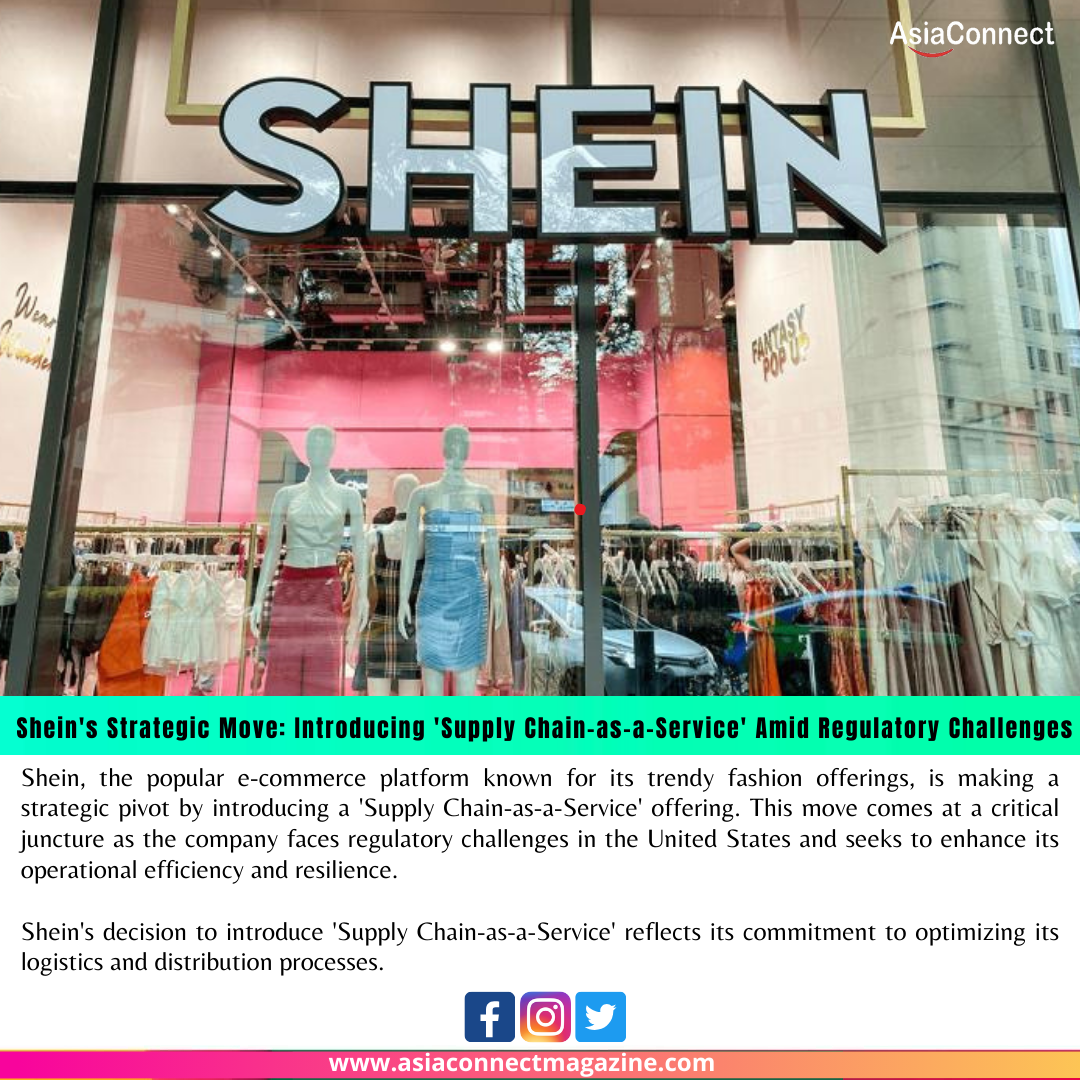Shein, the popular e-commerce platform known for its trendy fashion offerings, is making a strategic pivot by introducing a ‘Supply Chain-as-a-Service’ offering. This move comes at a critical juncture as the company faces regulatory challenges in the United States and seeks to enhance its operational efficiency and resilience.
- Understanding Shein’s Supply Chain TransformationShein’s decision to introduce ‘Supply Chain-as-a-Service’ reflects its commitment to optimizing its logistics and distribution processes. By leveraging technology and innovative solutions, Shein aims to streamline its supply chain operations, improve inventory management, and enhance customer satisfaction.
- Navigating Regulatory Challenges in the USThe introduction of ‘Supply Chain-as-a-Service’ also comes in response to regulatory scrutiny and challenges faced by Shein in the US market. Regulatory concerns regarding product safety, data privacy, and supply chain transparency have prompted the company to reevaluate its operations and strengthen compliance measures.
- Key Features of Shein’s Supply Chain-as-a-Service OfferingShein’s ‘Supply Chain-as-a-Service’ offering is designed to provide end-to-end solutions for brands and retailers, covering aspects such as sourcing, production, warehousing, fulfillment, and distribution. This comprehensive approach aims to streamline the entire supply chain ecosystem and drive operational efficiencies for businesses.
- Technology Integration for Enhanced EfficiencyCentral to Shein’s supply chain transformation is the integration of advanced technologies such as artificial intelligence, data analytics, and automation. These technologies enable real-time visibility, predictive analytics, demand forecasting, and agile decision-making, empowering Shein to optimize inventory levels and meet customer demands efficiently.
- Focus on Sustainability and Responsible PracticesShein’s ‘Supply Chain-as-a-Service’ offering also emphasizes sustainability and responsible practices across the supply chain. By partnering with eco-friendly suppliers, implementing green logistics practices, and promoting ethical sourcing, Shein aims to reduce its environmental footprint and contribute to sustainable development goals.
- Strategic Partnerships and CollaborationsShein is actively engaging in strategic partnerships and collaborations with logistics providers, technology firms, and industry experts to bolster its ‘Supply Chain-as-a-Service’ offering. These partnerships enable Shein to access cutting-edge solutions, industry best practices, and regulatory insights, strengthening its position in the market.
- Customer-Centric ApproachUltimately, Shein’s supply chain transformation is driven by a customer-centric approach, aiming to deliver seamless shopping experiences, faster delivery times, and higher product quality. By optimizing its supply chain operations, Shein seeks to maintain its competitive edge and meet the evolving expectations of modern consumers.
- Future Outlook and Growth OpportunitiesShein’s introduction of ‘Supply Chain-as-a-Service’ opens up new growth opportunities and revenue streams for the company. As businesses increasingly seek efficient and scalable supply chain solutions, Shein is well-positioned to capitalize on this demand and expand its footprint in the global e-commerce ecosystem.
In conclusion, Shein’s strategic move to introduce ‘Supply Chain-as-a-Service’ amidst regulatory challenges in the US demonstrates its commitment to operational excellence, sustainability, and customer satisfaction. By leveraging technology, partnerships, and responsible practices, Shein aims to transform its supply chain and drive long-term growth in the competitive e-commerce landscape.





